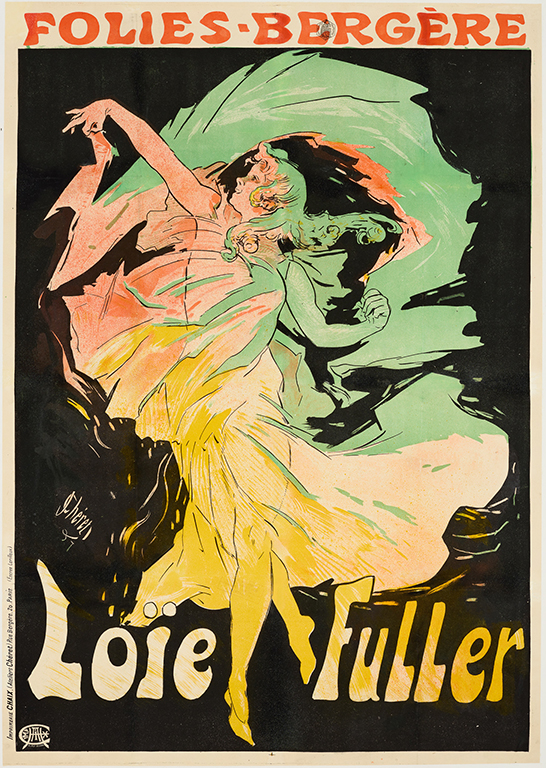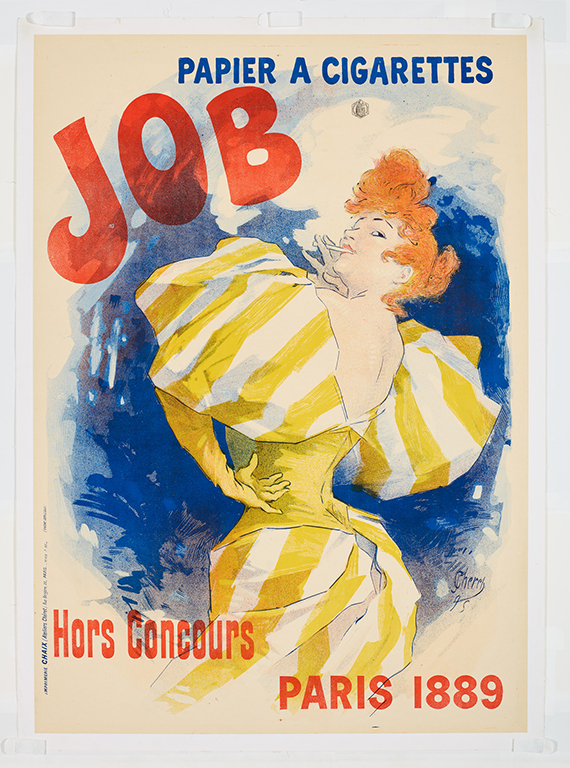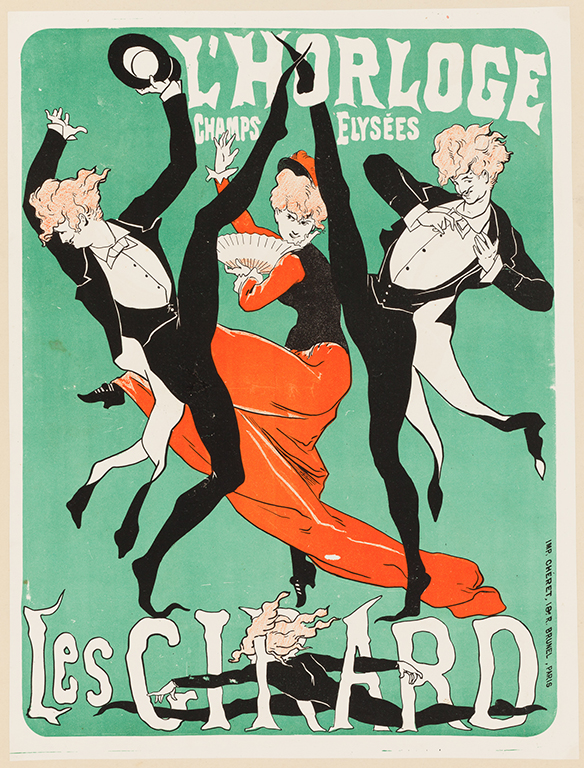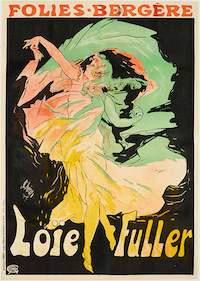
MILWAUKEE, Wis. – The Milwaukee Art Museum is presenting Always New: The Posters of Jules Cheret, the first solo exhibition in the United States of works by 19th-century French lithographer Jules Cheret (1836-1932). A pioneer of graphic arts and the illustrated poster, Cheret was a master of his medium who elevated lithography to an art form and shaped the way posters were both created and experienced by the public. The exhibition will be on view until October 16.
Always New: The Posters of Jules Cheret features more than 100 colorful and dynamic large-scale advertisements for French music halls, theaters, department stores, newspapers, leisure travel and products such as beverages, perfumes, cosmetics and pharmaceuticals, representing industries that saw rapid change and increased popularity during the late 19th century. The exhibition is organized by Milwaukee Art Museum Associate Curator of Prints and Drawings Nikki Otten.

“By using bold and bright colors and designs, drawing inspiration from multiple artistic traditions and innovating new techniques, Jules Cheret transformed modern lithography and established the poster as both a higher art form and a reflection of a moment in time,” said Otten. “With this first solo exhibition of Cheret’s work in the country, I’m excited to welcome the Milwaukee community to explore his genre-defining career and to celebrate the rich dynamism of his imagery and the historical insights it captures.”
One of the first artists to bring vibrant, large-scale advertisements to the streets of Paris, Cheret caused a sensation by transforming the city’s walls into what critics termed a “museum in open air.” The Parisian public was captivated by Cheret’s vivid imagery as well as the speed with which he created new designs through printmaking innovations such as his three-stone lithography process, which allowed him to make large quantities of posters quickly and inexpensively. Posters were rarely seen for more than a week as they were often damaged by the weather, covered over by other posters or carried off by stealthy collectors. The transience of both the posters and the subjects of Cheret’s designs — new entertainment and the latest consumer products — contributed to the popular sense that transformation was central to modernity.

By depicting industries that had emerged or assumed new significance at the time, Cheret’s posters captured aspects of everyday life for the 19th-century Parisian middle class. Some of his imagery portrayed issues related to socioeconomic status, consumerism, gender and race that remain relevant today. Always New: The Posters of Jules Cheret reveals how these engaging, ephemeral mass-produced posters reflected broader changes in society and became part of the cultural discourse around those changes.
The works in the exhibition are drawn from the museum’s James and Susee Wiechmann Collection of more than 600 posters, prints and drawings. Captivated by the joy and liveliness that Cheret’s images expressed, the couple spent 30 years assembling the largest and most comprehensive body of the artist’s work in the United States before donating it to the museum in 2021.

“We are truly grateful for this extraordinary collection of prints that the Wiechmann family has donated to the museum, greatly enhancing our holdings of works on paper,” said the Milwaukee Art Museum’s Donna and Donald Baumgartner Director, Marcelle Polednik. “The generosity of local collectors is an integral component of the museum’s ability to bolster our role as a valuable civic and educational resource for our community.”
Always New: The Posters of Jules Cheret builds on the museum’s legacy of organizing exhibitions that recognize the importance of poster art and advance public understanding and appreciation of the art form. These include Toulouse-Lautrec and the Pleasures of Paris (2000), Posters of Paris: Toulouse-Lautrec and His Contemporaries (2012), and regular rotations of poster works in the museum’s design and European art galleries.
About Jules Cheret
Jules Cheret (1836-1932) was born in Paris. Known today as the “father of the poster,” Cheret began apprenticing with a lithographer at 13 and subsequently worked for various print workshops until moving to London in 1859. There he worked for the perfumer and fellow French expatriate Eugene Rimmel, creating chromolithographed ephemera such as packaging, calendars and perfume books, and observed the colorfully illustrated posters covering the walls of the city. When he returned to Paris in 1866, he established his own printing press and eventually innovated new printing techniques that allowed him to create posters advertising ephemeral consumer products that were becoming ubiquitous. Cheret’s style reflected a range of artistic influences, from Rococo and Baroque painting to Japanese woodblock printing.
![Jules Cheret (French, 1836–1932), ‘Musee Grevin [before letters],’ 1900. Color lithograph. Image: 46 1/2 by 32 3/4in. (118.11 by 83.19cm), sheet: 48 3/8 by 34 1/2in. (122.87 by 87.63cm). The James and Susee Wiechmann Collection, M2021.372. Photo by John R. Glembin](https://www.liveauctioneers.com/news/wp-content/uploads/2022/07/r_m2021_372.jpg)
In 1881, Cheret merged his press with Imprimerie Chaix, a printing company that produced railroad timetables and maps as well as newspapers, and became artistic director of the company’s poster division. Around this time, Cheret’s posters started to receive considerable critical attention, with many critics hailing him as the king of the poster and celebrating him for popularizing art, citing his talent as a printmaker and his role in advancing lithography as well as his skill as a draftsman. In December 1889, he had his first solo exhibition of pastels, drawings and illustrated posters, which received widespread acclaim, and the following year the French government named him a knight of the Legion of Honor for transforming commercial printing.
Visit the website of the Milwaukee Art Museum and see its dedicated page for Always New: The Posters of Jules Cheret.



